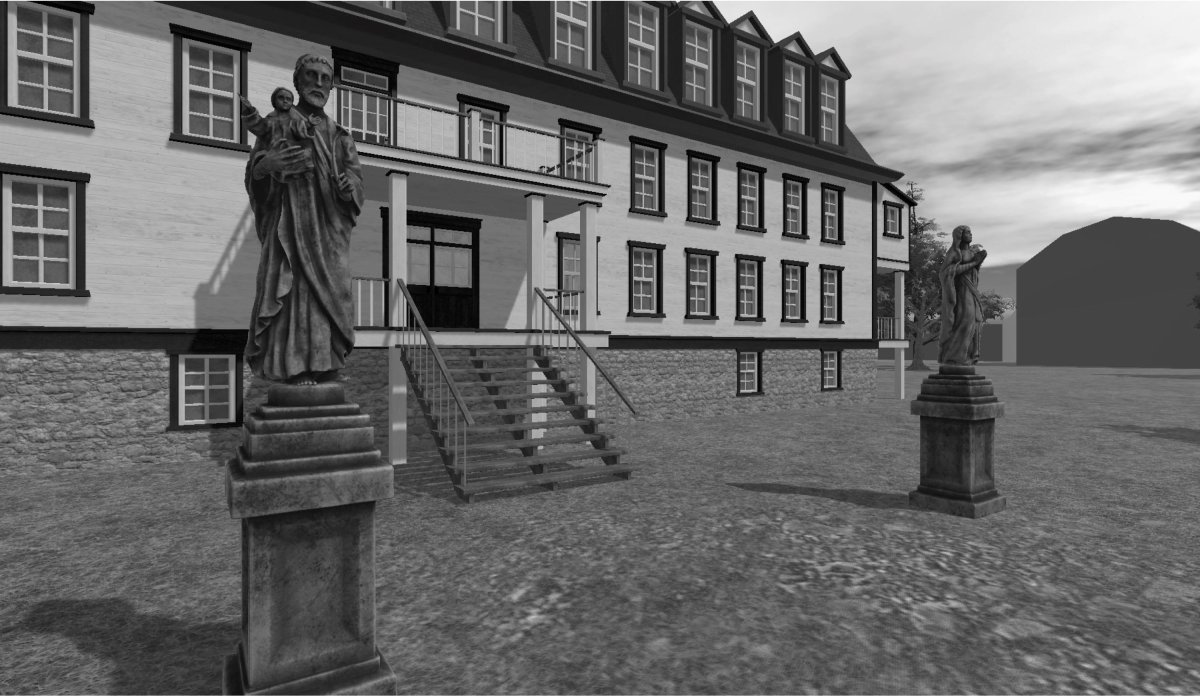It’s a journey that’s painful for many to relive, but a new virtual reality program is urging Manitobans to dive in headfirst.

The University of Manitoba has created a project that will allow people to immerse themselves in the experience of a residential school.
Called Embodying Empathy, the project is based on the Fort Alexander Indian Residential School that ran from 1906 through 1970 on Manitoba’s Sagkeeng First Nation.
The project took four years of collaboration between survivors, scholars and technology professionals.
One of those survivors, Theodore Fontaine, believes that educating young Canadians on the grim reality of the schools — while tough — is vital.
“People still do not understand the real story of Residential Schools and their destructive effects,” Fontaine said. “It’s an opportunity to be able to write the facts of history. This could be forgotten years from now.
“This project shows why it has been a lifelong struggle not only to ‘get over it’ but to find a level of inner peace, and to seek some semblance of forgiveness.”
The hope is that the immersive experience will give people a unique perspective on what happened around residential schools in Canada.
The new Embodying Empathy project will let viewers see a residential school in a virtual reality setting.
Dr. Andrew Woolford is one of the program’s creators. He said that working with Fontaine and the other survivors opened his eyes to the dark moment in the country’s history.
It’s a past so dark that all of it can’t be shown by Embodying Empathy.
“There are things we can’t represent fully,” Woolford said. “The full physical and sexual violence of the schools will not be represented in our virtual world. What we are trying to get at is the every experience of those schools.”
READ MORE: Aboriginal residential schools report just the beginning: survivors
That experience takes users from a bus or boat through the countryside into the school. Nuns and priests float above the floors of the school’s rooms, giving a ghostly quality to the scene.
Inside, stories are recounted by body-less voices: those of Fontaine and his fellow survivors.
“A lot of it is like a weight off my shoulders when I confront what happened,” Fontaine said. “People that went before me didn’t have the chance I have for a major step in reconciliation.
“I can feel my Grandma here. My Grandpa. My mom and dad.”
The U of M program will eventually be available as a learning tool for schools.
RELATED: Training on residential schools should be mandatory, justice says
Residential schools were government-sponsored boarding schools run by churches that forced the assimilation of Indigenous children into Euro-Canadian culture. About 150,000 Inuit, First Nation and Métis children were forced to attend, and about 6,000 of those children died.
“These experiences – of dislocation from family, arrival at school, and subjection to an alien and brutal new environment and way of life – profoundly affected IRS students in ways that continue to be felt by Survivors and their descendants across Canada today,” reads a statement from the U of M.
Survivors report widespread abuse, being cut off from family, loss of identity and culture.
The schools ran from 1831 until 1996. Former Prime Minister Stephen Harper formally apologized on behalf of the Canadian Government in 2008.






Comments